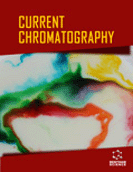Abstract
Background: The retention mechanisms of hydrophilic interaction liquid chromatography (HILIC) have been reported as inconclusive and of mixed mode, and have not been explained quantitatively. Packing materials used in HILIC are bare silica gel, polar bonded-silica gels, and ion-exchangers. The chromatography is performed in aqueous solution. Under such condition, the stability of these packing materials is not guaranteed by manufacturers. The fundamental problem associated with such discussions is the lack of definition of experimental conditions, which led to inconclusive discussions.
Objective: To define the experimental conditions, to clarify the differences of HILIC from other liquid chromatography techniques, and to quantitatively explain HILIC retention mechanisms.
Method: Molecular interaction (MI) between an analyte and a simple model phase was quantitatively analyzed in silico in terms of MI energy value difference. MI between an analyte and a solvent molecule was also studied. An analyte was inserted between the model phase and the solvent molecule, and the movement of the analyte was analyzed in terms of the strength of MI energy values.
Results: The analyte moved toward the favorite site based on van der Waals force in reversedphase liquid chromatography, hydrogen bonding in HILIC, and electrostatic interaction in ionexchange liquid chromatography.
Conclusion: For explaining the retention mechanism in HILIC, the experimental condition should be defined, and not be mixed with other liquid chromatographic conditions based on the properties of analytes and packing materials. The HILIC technique described herein is aqueous HILIC, while normal-phase liquid chromatography should be non-aqueous HILIC. Ion-exchange should be clearly classified as an independent liquid chromatographic method.
Keywords: Hydrophilic interaction liquid chromatography, HILIC, retention mechanisms, in silico, molecular mechanics, MOPAC, modeling.
 37
37 2
2 1
1 1
1

















